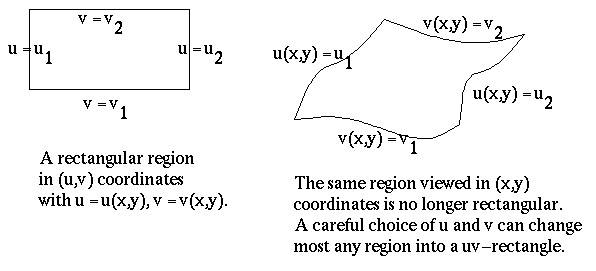Suppose we have a change of coordinates given by
![]()
What is the area element, dA, in the uv coordinate system?
Note that a region in uv-space that is rectangular is described by constant functions of the uv coordinates. The same patch of the plane in xy coordinates, looks more like a parallelogram (if we make it small enough):

The area of the parallelogram in the Cartesian plane can be found by taking the magnitude of the cross product of two vectors that lie along non-parallel edges of the figure. Thus,
![]()
where ![]() and
and ![]() are the displacement vectors along the sides
of the parallelogram:
are the displacement vectors along the sides
of the parallelogram:
This gives us
We now define the Jacobian of the coordinate change, using
determinants, to be ![]() given by
given by
![]()
The area element is then given by
![]()
To convert an integral in xy to an integral in uv: